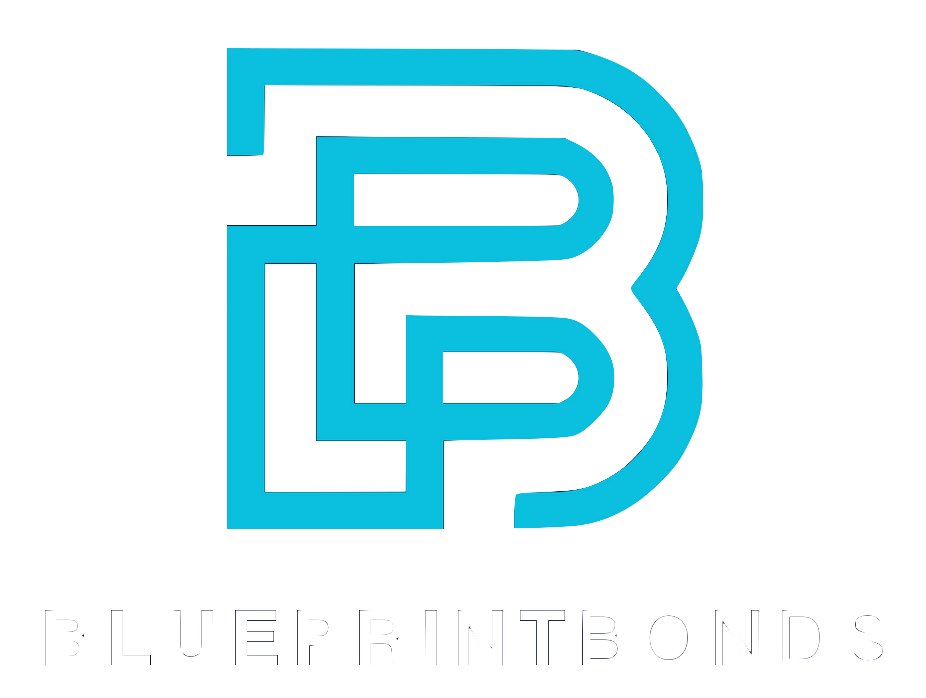In recent years, the surety bond market has garnered increasing attention, reflected not only in industry growth but also in rising online search interest. As infrastructure projects surge and small businesses expand their footprint in construction and related sectors, the demand for surety bonds is becoming a hot topic. This article dives into the current spikes in Google search trends around “surety bond,” exploring the key factors driving interest and what they mean for businesses, contractors, and investors alike.
Understanding these trends requires a look at the broader market context, including recent legislative impacts, technological advancements, and regional dynamics shaping the surety landscape. For those curious about why surety bonds are suddenly trending and what to expect moving forward, this comprehensive overview offers valuable insights backed by the latest data and expert analysis.
Why Are Surety Bonds Trending Now? The Market Growth Story
The surety bond market is experiencing notable growth, which naturally fuels increased online searches as businesses and individuals seek to understand this financial tool better. According to Allied Market Research, the global surety market was valued at $16 billion in 2021 and is projected to reach $24.4 billion by 2031, growing at a compound annual growth rate (CAGR) of 4.4% from 2022 to 2031. This steady expansion reflects a rising demand for surety bonds, especially in sectors like infrastructure development and residential construction.
Vitika Verma, Manager at Allied Market Research, highlights that “the surety market is expanding in all geographical regions of the world, owing to rising demand for infrastructure development and residential construction that involve surety.” This global growth narrative is echoed in the increasing volume of searches as contractors, developers, and financial professionals seek clarity on bonding requirements and opportunities.
The Impact of Infrastructure Investment
A significant driver behind the surge in surety bond interest is the massive investment in infrastructure projects, particularly in the United States. The Infrastructure Investment and Jobs Act (IIJA) has injected over $850 billion into federally owned projects, including roads, bridges, transit systems, and energy infrastructure. This influx of funding has created a ripple effect, boosting the demand for surety bonds as contractors and subcontractors secure projects backed by government guarantees.
This development is a key reason why searches for surety bonds have spiked recently, as companies look to navigate the bonding process amid a booming infrastructure landscape. The increased activity in public works projects makes surety bonds more relevant than ever, providing a safety net for project owners and a credential for contractors. Moreover, as the economy rebounds from the challenges posed by the pandemic, there is a renewed focus on sustainable and resilient infrastructure, which further emphasizes the role of surety bonds in ensuring that projects are completed on time and within budget.
Additionally, the rise of technology in the construction industry is reshaping how surety bonds are perceived and utilized. Digital platforms are streamlining the bonding process, making it easier for contractors to obtain the necessary bonds quickly. This technological advancement not only enhances efficiency but also increases transparency, allowing stakeholders to track project progress and compliance with bonding requirements. As more businesses embrace digital solutions, the demand for surety bonds is likely to grow, as they become an integral part of project financing and risk management strategies in an increasingly competitive market.
Technological Advancements Driving Surety Bond Interest
Alongside market growth, technological innovation is transforming how surety bonds are issued and managed. The adoption of digital platforms and AI-driven risk assessment tools has streamlined underwriting and claims processing, making the bonding process faster and more accurate. This modernization is attracting attention from businesses that previously found surety bonds complex or cumbersome.
Surety companies are leveraging these advancements to enhance efficiency, reduce errors, and improve customer experience. As a result, more firms are exploring surety bonds as viable financial instruments, contributing to the rise in online searches for related information.
For those interested in the technological side of the surety market, Surety EZ provides detailed insights into how digital transformation is reshaping the industry, making it easier for businesses to obtain bonds and manage their obligations.
Moreover, the integration of blockchain technology is poised to revolutionize the surety bond landscape further. By providing a secure and transparent ledger for transactions, blockchain can enhance trust between parties involved in the bonding process. This technology not only reduces the potential for fraud but also simplifies record-keeping and compliance tracking, which are critical aspects of bond management. As more surety companies begin to adopt blockchain solutions, we can expect an even greater shift towards efficiency and reliability in the industry.
Additionally, the rise of mobile applications is enabling businesses to manage their surety bonds on-the-go, providing real-time updates and notifications. This level of accessibility empowers users to stay informed about their bond status and any necessary actions, fostering a proactive approach to compliance. With the convenience of mobile technology, businesses can now engage with surety bonds in a way that aligns with their fast-paced operations, further driving the interest and utilization of these financial instruments.
Small and Medium-Sized Enterprises (SMEs) Fueling Demand
The surge in surety bond searches is also linked to the growing presence of small and medium-sized enterprises (SMEs) in construction and infrastructure sectors. With expanded bonding limits from the U.S. Small Business Administration, more SMEs are qualifying for surety bonds, enabling them to compete for larger projects and enter new markets.
This democratization of bonding access is a game-changer, encouraging smaller contractors to seek surety bonds as a way to build credibility and secure contracts. Consequently, the volume of searches related to surety bonds has increased, reflecting the curiosity and need for guidance among emerging businesses.
Industry experts at General Indemnity Group note that this trend is expected to continue, with SMEs playing a pivotal role in the surety market’s expansion in the coming years.
Moreover, the rise of technology and digital platforms has further empowered SMEs by providing them with easy access to information and resources about surety bonds. Online tools and calculators allow these businesses to assess their bonding needs and understand the requirements for obtaining bonds, making the process less daunting. This accessibility not only helps SMEs make informed decisions but also fosters a more competitive landscape where innovation and quality can thrive.
Additionally, as SMEs gain traction in the market, they are increasingly recognized for their contributions to local economies. By participating in larger projects, these enterprises not only enhance their own growth but also create job opportunities and stimulate economic development in their communities. This ripple effect underscores the importance of supporting SMEs in their bonding endeavors, as their success translates into broader benefits for society as a whole.
Regional Insights: North America Leading the Charge
Geographically, North America is the dominant player in the surety bond market, particularly the United States. The country’s robust infrastructure development initiatives and supportive government policies have created an environment ripe for surety market growth.
The Insight Partners reports that North America led the surety market in 2024, driven by ongoing infrastructure restoration projects and public-private partnerships. Their projections indicate the market will grow from $20.26 billion in 2024 to $31.85 billion by 2031 at a CAGR of 6.6%, underscoring the region’s critical role in shaping global surety trends.
This regional dominance explains why Google search trends for “surety bond” show a strong concentration of interest from North American users, reflecting the practical need for bonding knowledge in a highly active market.
Additionally, the demand for surety bonds in North America is further fueled by the increasing complexity of construction projects and the need for financial security among stakeholders. As companies engage in larger and more intricate ventures, the assurance provided by surety bonds becomes indispensable. This trend is particularly evident in sectors such as renewable energy, where significant investments are being made to meet sustainability goals, necessitating reliable bonding solutions to mitigate risks associated with project delays or failures.
Moreover, the regulatory landscape in North America is evolving to support the surety bond market. Recent legislative changes aimed at enhancing infrastructure investment and promoting economic recovery post-pandemic have provided a favorable backdrop for surety companies. These changes not only encourage more businesses to seek bonding but also enhance the overall credibility and stability of the surety market, making it an attractive option for contractors and project owners alike. As a result, the synergy between regulatory support and market demand is likely to drive further innovations and adaptations within the surety sector.
More details on these projections can be found in the report by The Insight Partners.
Declining Litigation and What It Means for the Market
Interestingly, while the surety bond market grows, litigation involving surety bonds has been on a decline. A report by Lex Machina covering 2017 to 2021 found that the number of surety bond cases steadily decreased, with only 409 cases filed in 2021—the lowest in the past decade.
This decline in legal disputes may indicate improved risk management and clearer contractual arrangements in the surety industry. It also suggests that parties are finding more effective ways to resolve issues outside of court, which could contribute to greater confidence in surety bonds as a reliable financial tool.
For those tracking legal trends related to surety bonds, the Lex Machina report offers valuable data and analysis.
The decline in litigation may also reflect broader economic trends, as businesses increasingly prioritize proactive measures to mitigate risks. Enhanced due diligence, better communication among stakeholders, and the adoption of technology-driven solutions are likely playing significant roles in this shift. For instance, the integration of advanced analytics and project management software can help identify potential issues before they escalate into disputes, fostering a more collaborative environment among contractors, owners, and surety companies.
Moreover, the reduction in litigation could be a sign of a maturing market where stakeholders are more educated about their rights and obligations under surety bonds. As educational initiatives and resources become more accessible, parties involved in surety agreements are better equipped to navigate complexities and avoid misunderstandings that could lead to legal action. This trend not only enhances the reputation of surety bonds but also encourages new entrants into the market, further fueling its growth.
What the Future Holds: Trends to Watch
Looking ahead, several trends are poised to influence surety bond interest and market dynamics. The continued emphasis on infrastructure investment, especially projects funded by government initiatives, will sustain demand for surety bonds. Additionally, the integration of AI and digital platforms will further simplify bonding processes, attracting a broader range of users. This technological evolution not only streamlines the application and approval processes but also enhances risk assessment capabilities, allowing surety companies to make more informed decisions and offer competitive rates.
Moreover, as SMEs gain greater access to bonding, the market will likely see increased competition and innovation. Public-private partnerships and infrastructure restoration efforts will remain key growth drivers, particularly in North America but also expanding globally. The rise of green infrastructure projects, aimed at sustainability and environmental resilience, is also expected to play a significant role in shaping the future of surety bonds. These initiatives will not only require bonding but may also introduce new standards and criteria that surety providers will need to adapt to in order to meet the evolving demands of the market.
For businesses and stakeholders, staying informed about these evolving trends is crucial. The surge in Google search activity around “surety bond” reflects a broader recognition of their importance in today’s economic landscape. This increased interest can be attributed to the growing awareness of the role that surety bonds play in mitigating risks associated with construction and service contracts, particularly in an era where financial security is paramount. As more businesses recognize the value of securing bonds, we can expect to see a shift in how surety bonds are perceived—not merely as a requirement, but as a strategic asset that can enhance credibility and foster trust in business transactions.
In summary, the spike in surety bond searches is not a fleeting phenomenon but a reflection of deep-rooted market forces, technological progress, and expanding opportunities. Whether you are a contractor, investor, or industry observer, understanding these trends will help navigate the surety bond market effectively in the years to come. As the landscape evolves, stakeholders must also consider the implications of regulatory changes and economic fluctuations, which could further impact the demand for surety bonds. Keeping a pulse on these dynamics will be essential for making informed decisions and capitalizing on emerging opportunities in this vital sector.




